土星 ALPO-Japan Latest

Saturn Image 2019/07/19(UT)
Christofer Mauricio Baez Jim,Trevor Barry,Jean-Luc Dauvergne,Pascal Lemaire,Luis Farinos Puerto
C.Baez,T.Barry,JL Dauvergne,Pascal.L,L.Farinos
|
Christofer Mauricio Baez Jimenez |
10 images derotated using WinJUPOS.
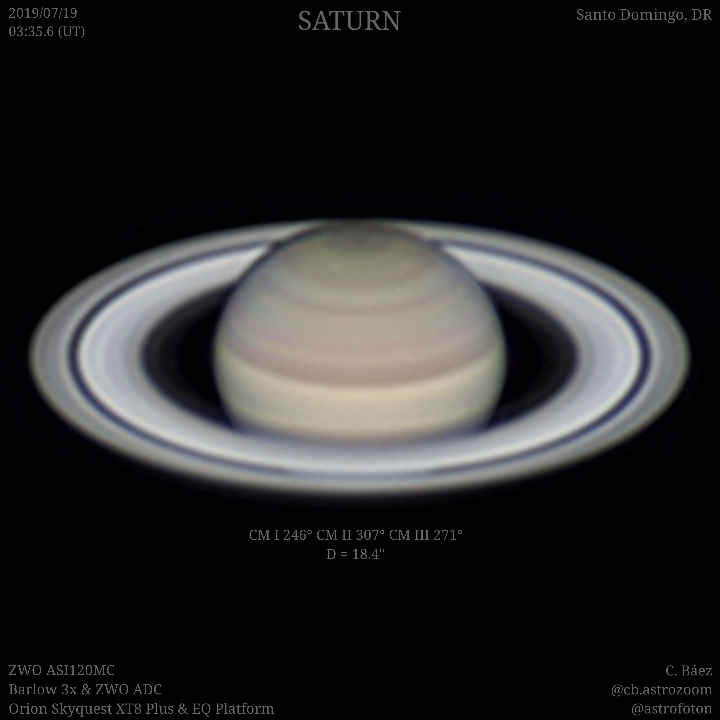 [Christofer Mauricio Baez Jimenez :Santo Domingo,Dominican Republic.]
[Christofer Mauricio Baez Jimenez :Santo Domingo,Dominican Republic.]
Imaged Saturn July 19th following on from doing some Jupiter data for Mission JUNO.
Had variable seeing for Saturn but managed two complete IR runs,30 minutes apart.
Am very excited to have resolved the anticyclone fossil of The Great Storm of 2010-2011.
It has been a while since I have resolved this,a couple of times I have resolved an oval a little further to the North which I have mistaken as this feature.
The fossil is a dark spot surrounded by a slightly brighter envelope. My data from July 19th resolves the feature as it is currently seen by the HST albeit on a smaller scale.
At first glance it is easy to overlook,it helps to zoom the data,but if the two IR images from my session are blinked it becomes very obvious.
I measure the anticyclone fossil of The Great Storm,a dark spot surrounded by a slightly brighter envelope to be at approx Lat+43.3 L3 199.6.
Other features in these data include a dark spot surrounded by a brighter envelope within the North Polar Storm remnant at approx Lat+65.2 L3 220.7 along with the ripple on the edge of the EZ impinging into the NEB at approx Lat+14 L1 172.5.
Note,I have indicated the features mentioned above with lines in the animation.
The drift rate of the anticyclone fossil of the Great Storm is 〓1.52 degrees per day.
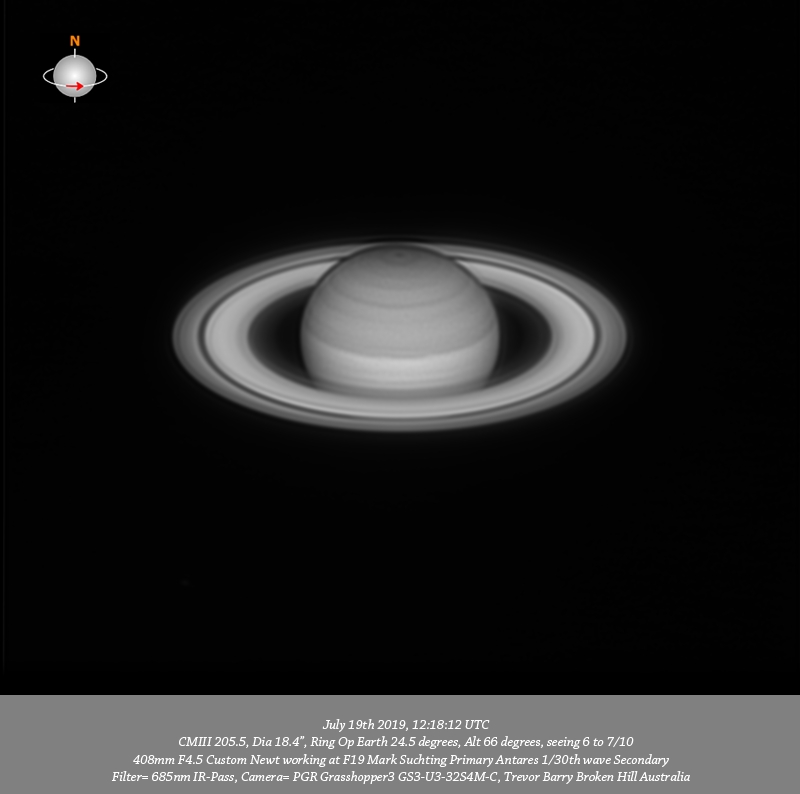
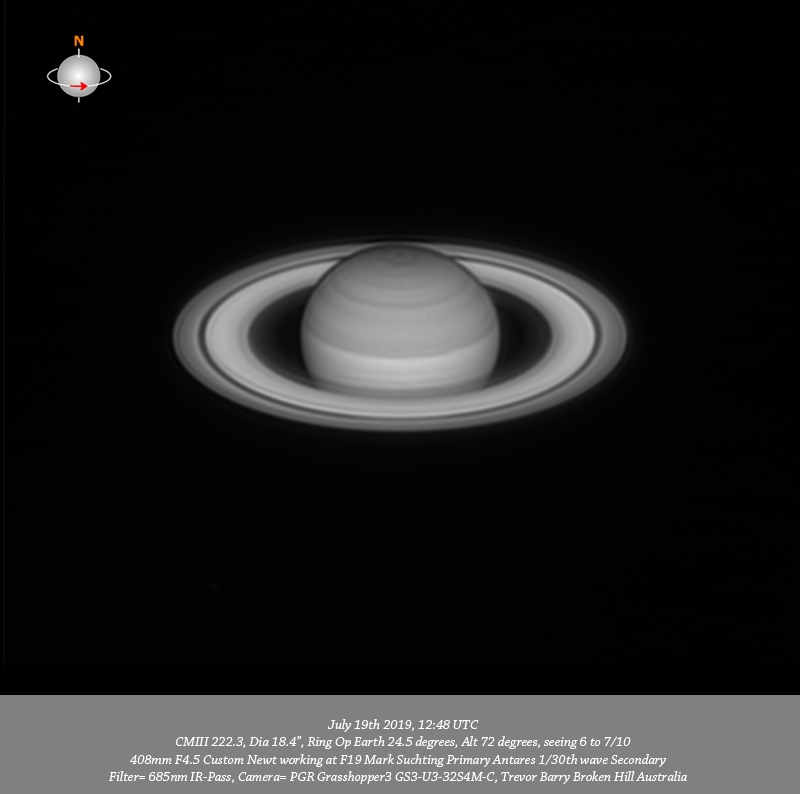
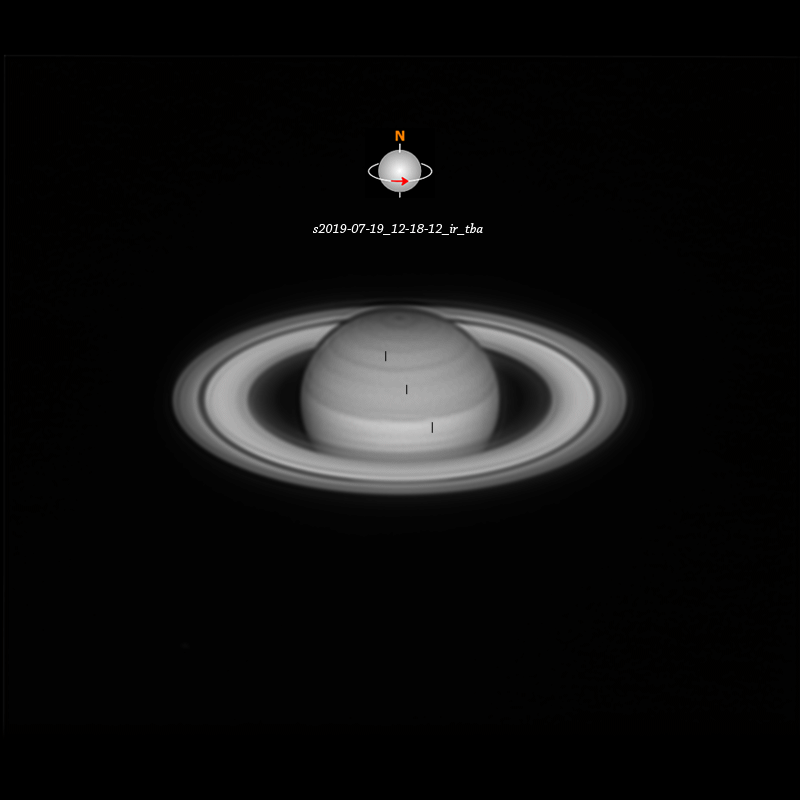 Another version of one of my data sets from July 19th resolving the anticyclone fossil of The Great Storm.
I mostly post my data at the native scale delivered by my scope/imaging train but for this example,to better highlight this feature,
I have resampled 200%. I try to not over sharpen my data but in this particular instance have gone significantly further than usual.
This 685nm-Pass IR image was capture July 19th at 12:18:12 UTC.
As previously mentioned the anticyclone fossil is at approx Lat+43.3 L3 199.6 it is drifting at -1.52 degrees/day.
Another version of one of my data sets from July 19th resolving the anticyclone fossil of The Great Storm.
I mostly post my data at the native scale delivered by my scope/imaging train but for this example,to better highlight this feature,
I have resampled 200%. I try to not over sharpen my data but in this particular instance have gone significantly further than usual.
This 685nm-Pass IR image was capture July 19th at 12:18:12 UTC.
As previously mentioned the anticyclone fossil is at approx Lat+43.3 L3 199.6 it is drifting at -1.52 degrees/day.
 [Trevor Barry:Broken Hill:Australia]
[Trevor Barry:Broken Hill:Australia]
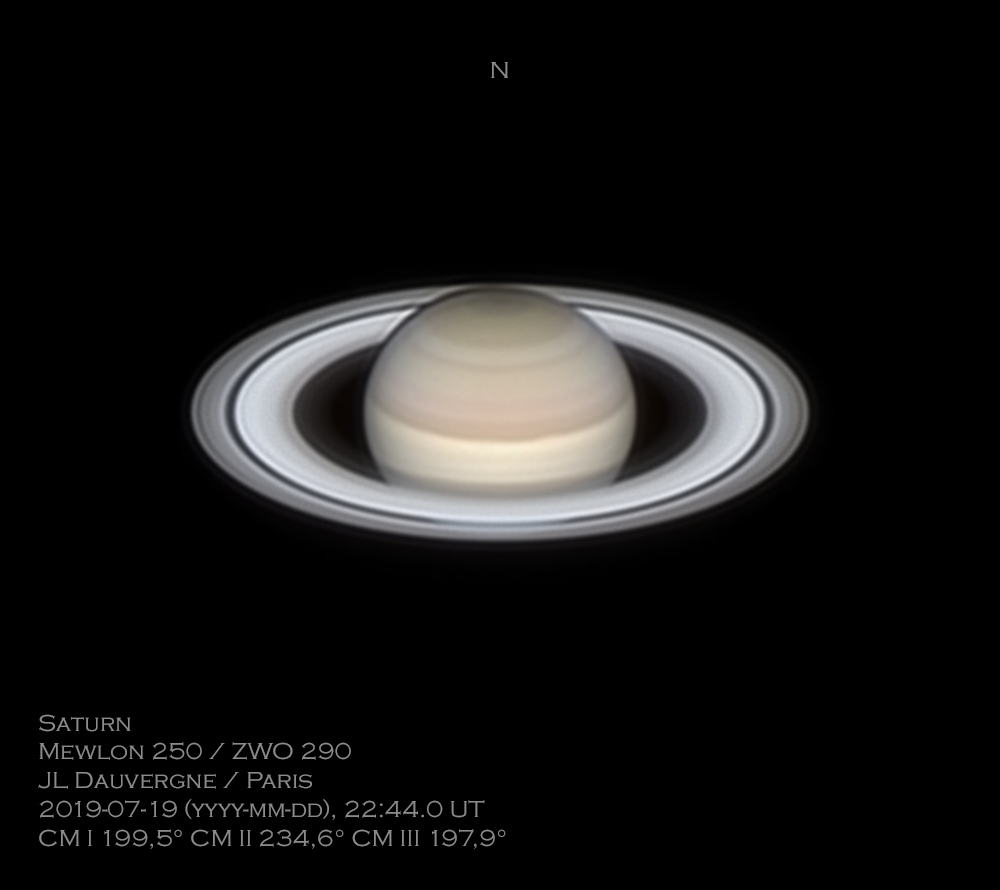 [Jean-Luc Dauvergne:Paris France]
[Jean-Luc Dauvergne:Paris France]
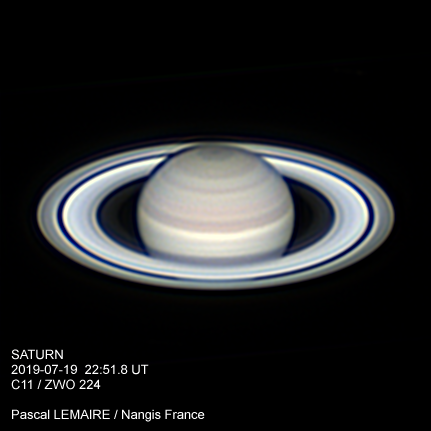 [Pascal Lemaire : France]
[Pascal Lemaire : France]
 [Luis Farinos Puerto :(Valencia,Espana)]
[Luis Farinos Puerto :(Valencia,Espana)]


[Christofer Mauricio Baez Jimenez :Santo Domingo,Dominican Republic.]


Another version of one of my data sets from July 19th resolving the anticyclone fossil of The Great Storm. I mostly post my data at the native scale delivered by my scope/imaging train but for this example,to better highlight this feature, I have resampled 200%. I try to not over sharpen my data but in this particular instance have gone significantly further than usual. This 685nm-Pass IR image was capture July 19th at 12:18:12 UTC. As previously mentioned the anticyclone fossil is at approx Lat+43.3 L3 199.6 it is drifting at -1.52 degrees/day.
[Trevor Barry:Broken Hill:Australia]
[Jean-Luc Dauvergne:Paris France]
[Pascal Lemaire : France]
[Luis Farinos Puerto :(Valencia,Espana)]
 ALPO-Japan Latest
ALPO-Japan Latest

 Saturn Section
Saturn Section